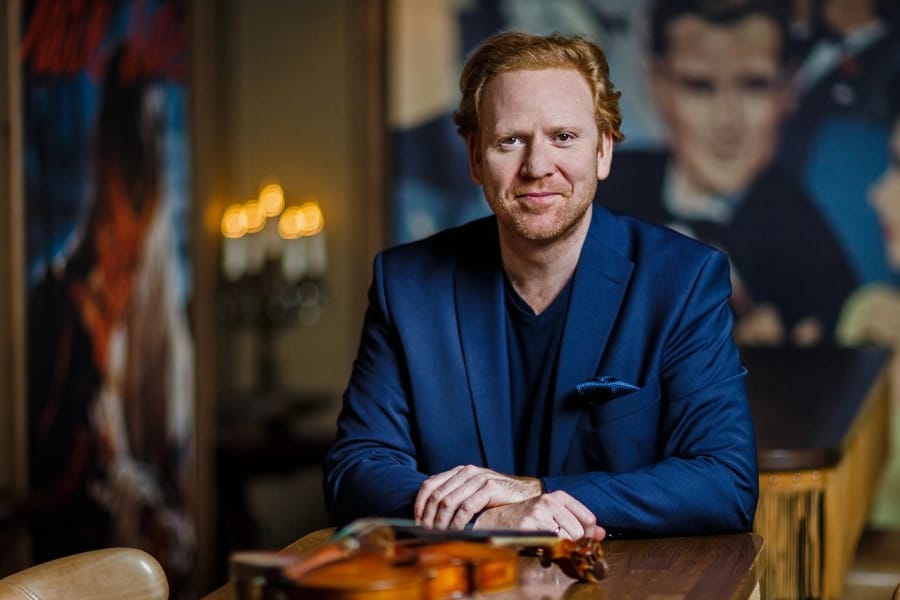
Daniel Hope and Friends return to a project he began about a decade ago, with a concert called AIR – A Baroque Journey at San Francisco Performances. It’s a program that spans the end of the Renaissance to the end of the Baroque, showing the evolution that took place in the way the violin was played, and perceived… it wasn’t always the refined instrument we think of it as today.
There’s more information at the San Francisco Performances website.
He and his collaborators are revisiting the Deutsche Grammophon album of the same name, with some additional repertoire and new players. “That record started that journey, by tracing a number of composers, some of whom are well-known, some of whom are completely unknown, and looking at the different influences that wandering violinists had as they gathered information crossing Europe.” People might presume that violin music from the Baroque is a narrow focus, but not so, says Hope: “It’s very fun, it’s very daring, it’s very virtuoso, and it really takes the audience on a long journey through the renaissance dances, the jigs, the love songs, and tells the story of how music for violin evolved over this time. You have music that was written for celebration, you have music that was written for rituals, for sleeping, for eating, for dancing. It’s the use of music in this time which is so incredible.” Our perception of the role of the instrument has evolved as well. “The violin in those days was considered to be a very basic, quite a sort of a dangerous, rough and ready instrument. It was a percussive instrument that the dance master would use to get people to dance. Only after the initial emergence of that kind of music came the idea of cantabile, of singing, of changing the violin and using it to elicit other kind of tones.”







